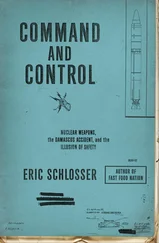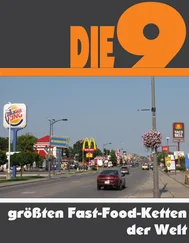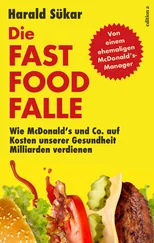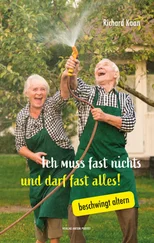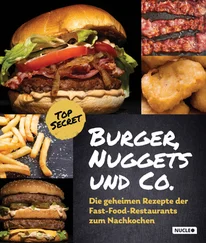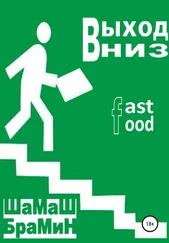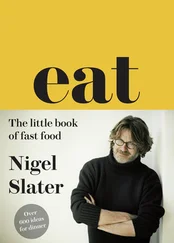General Motors eventually persuaded other companies that benefited from road building to help pay for the costly takeover of America’s trolleys. In 1947, GM and a number of its allies in the scheme were indicted on federal antitrust charges. Two years later, the workings of the conspiracy, and its underlying intentions, were exposed during a trial in Chicago. GM, Mack Truck, Firestone, and Standard Oil of California were all found guilty on one of the two counts by the federal jury. The investigative journalist Jonathan Kwitny later argued that the case was “a fine example of what can happen when important matters of public policy are abandoned by government to the self-interest of corporations.” Judge William J. Campbell was not so outraged. As punishment, he ordered GM and the other companies to pay a fine of $5,000 each. The executives who had secretly plotted and carried out the destruction of America’s light rail network were fined $1 each. And the postwar reign of the automobile proceeded without much further challenge.
The nation’s car culture reached its height in southern California, inspiring innovations such as the world’s first motel and the first drive-in bank. A new form of eating place emerged. “People with cars are so lazy they don’t want to get out of them to eat!” said Jesse G. Kirby, the founder of an early drive-in restaurant chain. Kirby’s first “Pig Stand” was in Texas, but the chain soon thrived in Los Angeles, alongside countless other food stands offering “curb service.” In the rest of the United States, drive-ins were usually a seasonal phenomenon, closing at the end of every summer. In southern California, it felt like summer all year long, the drive-ins never closed, and a whole new industry was born.
The southern California drive-in restaurants of the early 1940s tended to be gaudy and round, topped with pylons, towers, and flashing signs. They were “circular meccas of neon,” in the words of drive-in historian Michael Witzel, designed to be easily spotted from the road. The triumph of the automobile encouraged not only a geographic separation between buildings, but also a manmade landscape that was loud and bold. Architecture could no longer afford to be subtle; it had to catch the eye of motorists traveling at high speed. The new drive-ins competed for attention, using all kinds of visual lures, decorating their buildings in bright colors and dressing their waitresses in various costumes. Known as “carhops,” the waitresses — who carried trays of food to patrons in parked cars — often wore short skirts and dressed up like cowgirls, majorettes, Scottish lasses in kilts. They were likely to be attractive, often received no hourly wages, and earned their money through tips and a small commission on every item they sold. The carhops had a strong economic incentive to be friendly to their customers, and drive-in restaurants quickly became popular hangouts for teenage boys. The drive-ins fit perfectly with the youth culture of Los Angeles. They were something genuinely new and different, they offered a combination of girls and cars and late-night food, and before long they beckoned from intersections all over town.
BY THE END OF 1944, Carl Karcher owned four hot dog carts in Los Angeles. In addition to running the carts, he still worked full-time for the Armstrong Bakery. When a restaurant across the street from the Heinz farm went on sale, Carl decided to buy it. He quit the bakery, bought the restaurant, fixed it up, and spent a few weeks learning how to cook. On January 16, 1945, his twenty-eighth birthday, Carl’s Drive-In Barbeque opened its doors. The restaurant was small, rectangular, and unexceptional, with red tiles on the roof. Its only hint of flamboyance was a five-pointed star atop the neon sign in the parking lot. During business hours, Carl did the cooking, Margaret worked behind the cash register, and carhops served most of the food. After closing time, Carl stayed late into the night, cleaning the bathrooms and mopping the floors. Once a week, he prepared the “special sauce” for his hamburgers, making it in huge kettles on the back porch of his house, stirring it with a stick and then pouring it into one-gallon jugs.
After World War II, business soared at Carl’s Drive-In Barbeque, along with the economy of southern California. The oil business and the film business had thrived in Los Angeles during the 1920s and 1930s. But it was World War II that transformed southern California into the most important economic region in the West. The war’s effect on the state, in the words of historian Carey McWilliams, was a “fabulous boom.” Between 1940 and 1945, the federal government spent nearly $20 billion in California, mainly in and around Los Angeles, building airplane factories and steel mills, military bases and port facilities. During those six years, federal spending was responsible for nearly half of the personal income in southern California. By the end of World War II, Los Angeles was the second-largest manufacturing center in America, with an industrial output surpassed only by that of Detroit. While Hollywood garnered most of the headlines, defense spending remained the focus of the local economy for the next two decades, providing about one-third of its jobs.
The new prosperity enabled Carl and Margaret to buy a house five blocks away from their restaurant. They added more rooms as the family grew to include twelve children: nine girls and three boys. In the early 1950s Anaheim began to feel much less rural and remote. Walt Disney bought 160 acres of orange groves just a few miles from Carl’s Drive-in Barbeque, chopped down the trees, and started to build Disneyland. In the neighboring town of Garden Grove, the Reverend Robert Schuller founded the nation’s first Drive-in Church, preaching on Sunday mornings at a drive-in movie theater, spreading the Gospel through the little speakers at each parking space, attracting large crowds with the slogan “Worship as you are… in the family car.” The city of Anaheim started to recruit defense contractors, eventually persuading Northrop, Boeing, and North American Aviation to build factories there. Anaheim soon became the fastest-growing city in the nation’s fastest-growing state. Carl’s Drive-In Barbeque thrived, and Carl thought its future was secure. And then he heard about a restaurant in the “Inland Empire,” sixty miles east of Los Angeles, that was selling high-quality hamburgers for 15 cents each — 20 cents less than what Carl charged. He drove to E Street in San Bernardino and saw the shape of things to come. Dozens of people were standing in line to buy bags of “McDonald’s Famous Hamburgers.”
Richard and Maurice McDonald had left New Hampshire for southern California at the start of the Depression, hoping to find jobs in Hollywood. They worked as set builders on the Columbia Film Studios back lot, saved their money, and bought a movie theater in Glendale. The theater was not a success. In 1937 they opened a drive-in restaurant in Pasadena, trying to cash in on the new craze, hiring three carhops and selling mainly hot dogs. A few years later they moved to a larger building on E Street in San Bernardino and opened the McDonald Brothers Burger Bar Drive-In. The new restaurant was located near a high school, employed twenty carhops, and promptly made the brothers rich. Richard and “Mac” McDonald bought one of the largest houses in San Bernardino, a hillside mansion with a tennis court and a pool.
By the end of the 1940s the McDonald brothers had grown dissatisfied with the drive-in business. They were tired of constantly looking for new carhops and short-order cooks — who were in great demand — as the old ones left for higher-paying jobs elsewhere. They were tired of replacing the dishes, glassware, and silverware their teenage customers constantly broke or ripped off. And they were tired of their teenage customers. The brothers thought about selling the restaurant. Instead, they tried something new.
Читать дальше


